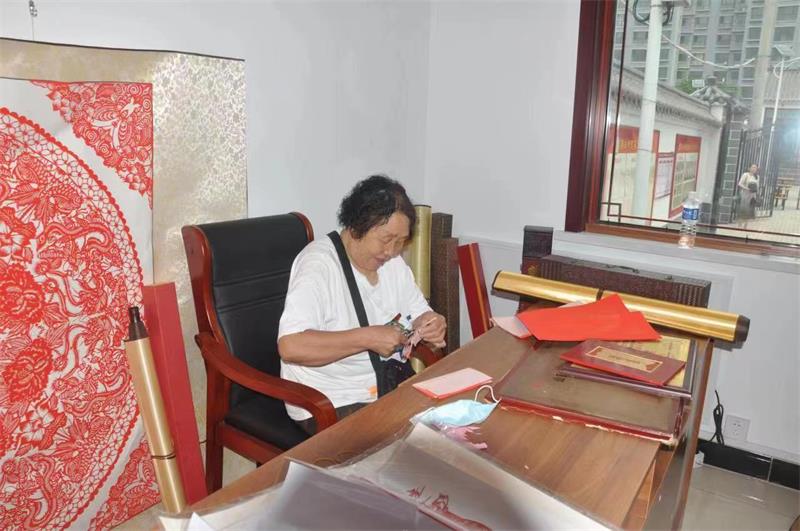"Non -Ridge Tibetan" paper -cutting and cloth tiger are glory in the inheritance of Yangquan Mining Area
Author:Smart Life News Time:2022.07.31
(Reporter Liang Fenglin, Lu Donglai, Shi Yan) Paper -cutting and cloth tigers are folk art forms created, circulated, accumulated, and enjoyed in the working people's labor people in my country. They have a long history, profound connotation, and diverse forms. One paper cuts a knife, one stitches and one line, which truly records the ideological emotions and ideals of the working people, expressing the love and praise of the people's love and praise for life.

In recent years, Yangquan City Mining Area Party Committee and District Government have deeply dug the cultural accumulation, focusing on promoting the inheritance of non -heritage culture. From the aspects of party building leadership, innovation integration, and service development Promoting the special role in development not only brighten the local non -heritage cultural brands, but also promote the implementation of civilized practice in the new era in the region.
The "paper -cutting" and "cloth tiger" work room established in Cai Dong Community Service Center, Caiwa Street, Yangquan Mining Area. Various colors and forms of cute and cute cloth tiger works neatly on the booth. Two "non -heritage" works are dazzling, so that the guests who come to visit are overwhelmed. Li Jinzhu, a national first -class artist, a master of folk craftsmanship in Shanxi Province, and the outstanding inheritor inheritance in Shanxi Province's non -material cultural heritage, waved scissors in his hands, and is creating a pair of paper -cutting. As early as 1995, when Li Jinzhu participated in the first "Chinese Women's Handicrafts Competition" when he participated in the first National Women's Federation, he won the first prize with the paper -cut masterpiece "Successful Success", and was given "scarred god shear" by the then chairman of the National Women's Federation Chen Muhua. Honor title. Li Jinzhu's life is particularly happy with graphic paper -cutting art throughout his life. After 60 years of paper -cutting career, there are countless works created. Successful success of China Dragon, Mao Zedong's avatar, portrait portrait portrait, 365 blessing characters and other large -scale works are representative works.
Liang Lanhua, a fabric embroidery artist in the same studio with Li Jinzhu in the same studio, Liang Lanhua, an intangible cultural heritage inheritance, is also busy making works every day. The tiger's "stance is stunned, and the slightly domineering tiger head adopts Ganoderma lucidum, which means that Fulu Xiang is peaceful, atmospheric, and festive. The production process of "cloth tiger" is complicated. Most of them are equipped with embroidery and cloth stickers. The entire production process is completed by hand. Liang Lanhua has learned embroidery fabric with her mother since she was a child. After many years of research and hard work, she has created embroidery works "White Heng Peony" and "Rich Peony". Omno pillows and other representative works have been well received and recognized by all sectors of society.
"As early as a few years ago, I was embarrassed to have my own studio." Li Jinzhu, who was in his 70s, said, "In the mining district party committee, district government, district Wen Journey bureau, Caiwa street, Cai Dong community, the strong support and support and Cai Dong community. With concern, Liang Lanhua and I have finally 'dreams'. In the future, in our studio, we must inherit our own paper -cutting and cloth tiger skills to make the mining area 'non -heritage' shining. "
- END -
China's first rubber wheel subway train is offline and exported overseas for the first time

Mexico City Metro Line 1 overall modernization project System+ project was complet...
Fuxing Street's municipalization transformation of the White Buddha Tunnel section is completed and opened to traffic
The municipalization transformation project of Fuxing Street has reported it again. After 59 consecutive days and nights, on June 30, the Bai Buddha Tunnel section of the Municipalization Reconstructi